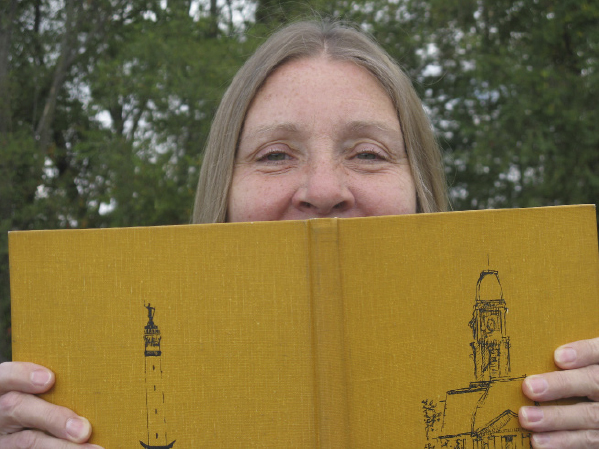Turkeys, Cranberries and . . . Oysters?

A recent discussion with a friend about cranberries got me started wondering when cranberries, turkey and all the other traditional Thanksgiving dishes began to appear on Hamilton County tables.
Unfortunately, I can’t provide any exact dates because we’re missing so many issues of the county’s pre-Civil War newspapers. However, other Indiana newspapers make it clear that by the time Abraham Lincoln established a fixed day for the holiday in 1863, Thanksgiving menus were pretty much the same as they are today — with a few exceptions.
Then, as now, roast turkey took center stage.
The earliest mention I found of turkeys being part of local Thanksgiving feasts appears in the December 11, 1874 Noblesville Ledger — “Thanksgiving is over, and a few turkeys are left for Christmas.”
As early as 1879, you could buy dressed turkeys for the holidays in Noblesville’s groceries. In 1882 J. E. Killen’s store on the south side of the courthouse square offered shoppers a choice of dressed OR live turkeys. (Live turkeys!)
Of course, some people continued to hunt their own turkeys for Thanksgiving and Christmas dinners. In 1874 the Ledger noted that one local man had bagged a 25 pound wild turkey with “a magnificent beard of 13 inches.”
I tend to think of cranberries as coming from Massachusetts or Wisconsin, so I was surprised to discover they weren’t that difficult to find around here in the 19th century. In fact, a farmer in LaPorte County in northern Indiana produced 8,000 bushels in 1878.
That may be how T. P. Swain was able to advertise cranberries (presumably fresh ones) for sale in his grocery that November. No prices were mentioned in Swain’s ad, but I saw a market report that the berries had sold for ten cents a quart the previous year.
Another surprising Thanksgiving item was celery. We take the availability of celery for granted today, but it wasn’t always that easy to come by in the late 1800s and was, therefore, highlighted in Thanksgiving grocery ads. A 1900 Democrat article noted that 35 to 40 years earlier it hadn’t been unusual for someone to travel as far as 25 miles away to pick up celery for Thanksgiving dinner.
What surprised me most, however, is that oysters were considered a normal part of Thanksgiving dinners in the 19th century. (Oysters . . . in landlocked Indiana!) I’m not talking about oyster dressing necessarily. No, I mean plain old oysters, served every way you can think of.
Hamilton County people apparently LOVED oysters. The newspapers are full of restaurant and grocery advertisements for them, and oyster suppers were as popular then as chicken dinners would be in the early 20th century.
In 1881 restaurant owner Frank Becker even offered to deliver fresh oysters, in bulk or can, twice a day, to any part of Noblesville!
Dessert at these early Thanksgiving dinners was generally mincemeat and/or pumpkin pie.
If a housewife didn’t have time to make her own mincemeat, she was in luck In 1875. Killen Bro.’s grocery advertised mincemeat “ready for use, made by responsible parties.” J. K. Farrell, who operated a grocery near the train depot, also sold homemade mincemeat. His cost 13 cents a pound.
Pumpkin pie was so common, I couldn’t find much about it in the newspapers. The October 22, 1897, Hamilton County Ledger has a great quote, though — “No man, unless he be a heathen, ever eats a genuine pumpkin pie without thinking of his mother, home, Thanksgiving and schoolboy days.”
These weren’t the only dishes often served at early Thanksgiving feasts. That 1900 Democrat article also mentions chicken pie, cold roast pig, mashed potatoes and turnips, boiled onions, baked Indian pudding, nuts, raisins, fruit, cider and coffee.
Hungry yet?
Happy Thanksgiving!
Paula Dunn’s From Time to Thyme column appears on Wednesdays in The Times. Contact her at younggardenerfriend@gmail.com
